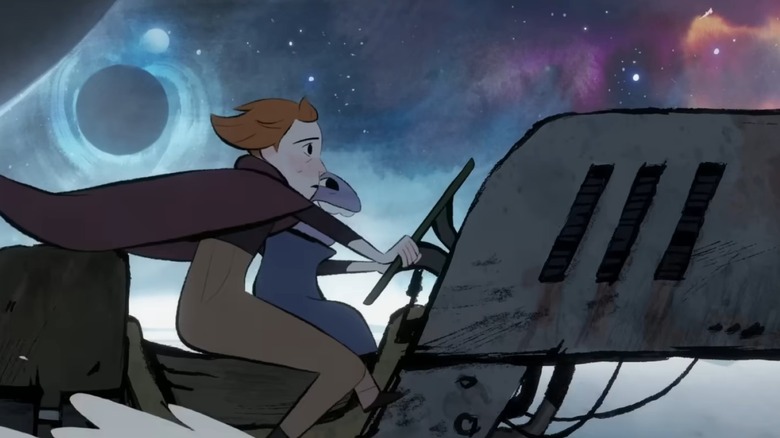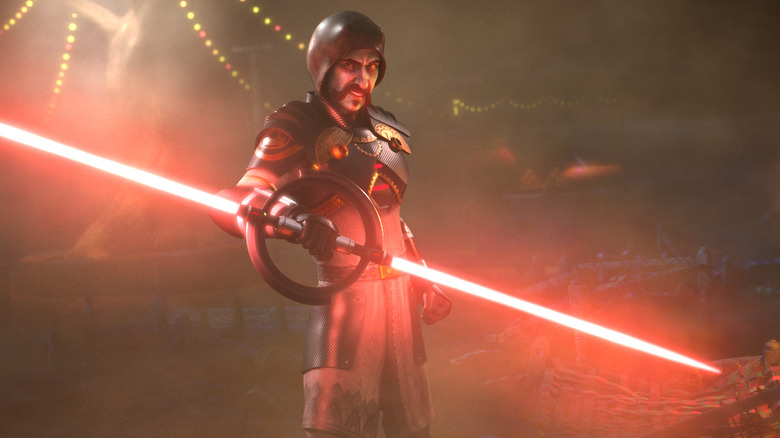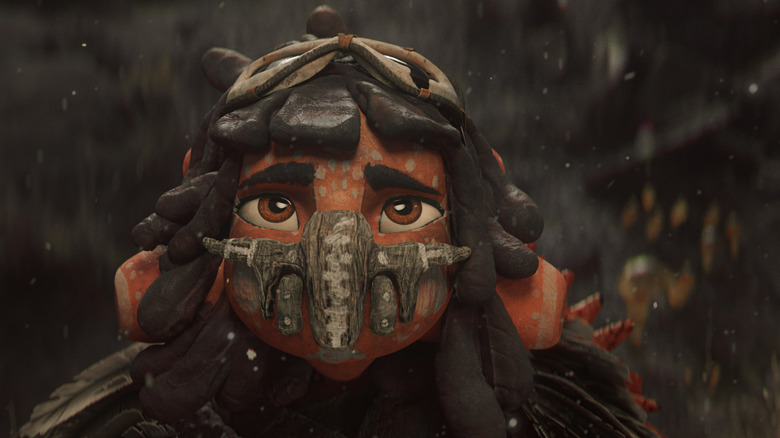The Best Star Wars: Visions Season 2 Episodes Have One Key Thing In Common
The best thing George Lucas ever did "Star Wars" was, well, create "Star Wars." The second best thing he ever did was to open his sandbox to the world, allowing others to play in the universe he created, reinterpreting and adding to it. Since then, the franchise has grown from a tale of rebellion and one farm boy becoming a hero to a true epic spanning millennia, with stories and characters as varied as they come.
This is why "Star Wars: Visions" is the purest expression of the sandbox-y nature of the "Star Wars" galaxy. The first season proved that the iconography and themes of the galaxy far, far away could translate well to different art styles and different stories than what we'd seen before — it could be about robots who want to be heroes as much as it could be a rock opera. The show fulfilled the promise of "Star Wars" being home to all kinds of stories made by all kinds of creators.
Now, "Volume 2" has "Star Wars: Visions" double down on this idea and truly shows what "Star Wars" can be when filtered through the eyes of different filmmakers, as the season expands its borders to include episodes from studios all over the world. The best of them have the creators infuse the shorts with their own background, delivering great deconstructions and reinterpretations of the franchise, whether it's bringing a true history of genocide or authentic Indian music and visuals to "Star Wars."
Authenticity and reinterpretation
Cartoon Saloon (the Oscar-nominated studio behind "Wolfwalkers") delivers yet another banger with "Screecher's Reach," the story of a kid who dreams of a different life but in her desire for adventure ends up dragging her friends to a haunted cave where a ghost lives.
Director Paul Young described the episode as "an Irish kind of ghost story with a twist," during a panel at Star Wars Celebration, and it shows. The ghost story, which is not uncommon in Irish mythology, easily blends into the tropes and aesthetics of "Star Wars," resulting in something unique and special. What appears to be the story of an old lady haunting a cave turns out to have very dark side implications, with the signature Cartoon Saloon visual style tellings a story that feels uniquely Irish while also uniquely star wars.
Likewise, Studio 88 Pictures' "The Bandits of Golak" tells the story of two siblings in the time of the Empire, but blends the traditional designs and iconography of the galaxy far, far away with authentic music, costumes, and designs of Indian culture to create something new and fresh — with fantastic visuals. Even "The Spy Dancer" by French Studio La Cachette directly references the history of the French Resistance during the Nazi occupation.
Then there's Studio PunkRobot's "In the Stars," directed by Gabriel Osorio Vargas. The episode tells a story of oppression and rebellion, about two sisters navigating the desolate wasteland that used to be her home before the Empire destroyed it to mine for resources. What makes the episode special, however, is that it's heavily inspired by the real genocide of the Selk'nam people of Patagonia.
A breath of fresh air
"This story came from a real story that for us, as Latin Americans and Chileans, is really a very important story and sadly, it's very unknown," the director said at Star Wars Celebration.
If you didn't know the background, this could just function as another story of rebellion, illustrating the oppression of the Empire and what they do to small worlds — not so different from "Andor." It is that background, however, and it is that inspiration that truly makes "In the Stars" click, the imagery that is heavily inspired by the indigenous people of Patagonia, the way they reinterpret the Force as part of nature, the way they make their story of resistance against foreign invaders.
Something similar happens in "Andor," where even if the show is written and created by white people, Diego Luna's involvement, both in front of the camera and behind it as an executive producer heavily infuses the story with an extra layer of depth and meaning — because the history and story of Latin America is a story of rebellion, oppression, and resistance.
"Star Wars: Visions" feels like the most revolutionary thing "Star Wars" has ever done, because it encapsulates what the best projects in this franchise do, it allows people with something to say to play in this world while having a unique and specific vision of what "Star Wars" is.


